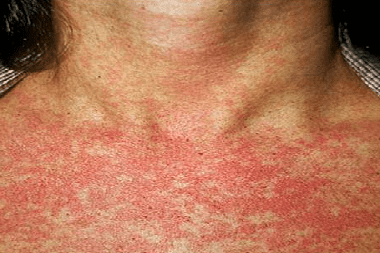Infectious diseases >>>> Rubella - signs and prevention
Rubella - signs and prevention.

Rubella is a viral infectious disease transmitted by airborne droplets or through close communication. Rubella virus is not transmitted through household items. The disease got its name in connection with the earliest symptom of its manifestation - a skin rash, and on the mucous membrane of the palate - petichiae (capillary hemorrhages).
Rubella disease has an incubation period of up to two to three weeks and a prodromal period of one to five days. The rubella virus (Rubella virus) is unstable to high temperatures (above 50 degrees), but it persists well at subzero temperatures and does not lose its viability, which distinguishes it from other airborne viruses.

Rubella is relatively easy, but creates a danger for pregnant women, since the virus is able to penetrate the placental barrier and disrupt the development of the fetus up to abnormalities.
It is for this reason that vaccination against the rubella virus is proposed (included in the measles vaccine) in order to develop immunity in advance and eliminate the risk of infection during pregnancy.
Signs of rubella:
- an increase in the posterior cervical, posterior and occipital lymph nodes,
- small rash on the skin, including on the face,
- runny nose,
- headache,
- the temperature practically does not rise above 38 degrees.
Rubella does not require specific treatment, since during the period of illness, the immune system produces antibodies to this virus, that is, a person who has had rubella develops lifelong immunity to Rubella virus.

Read

Read



























